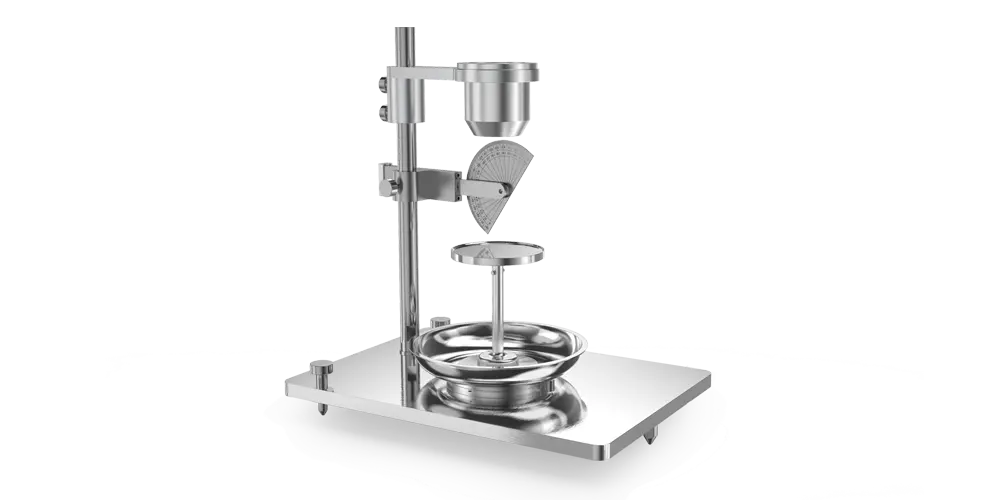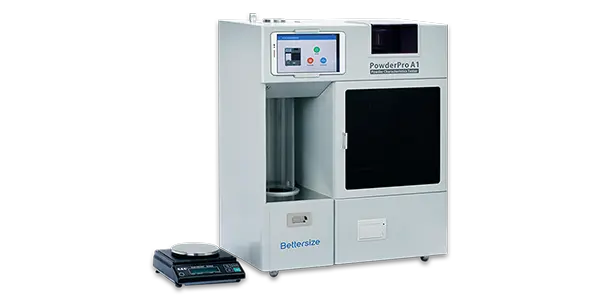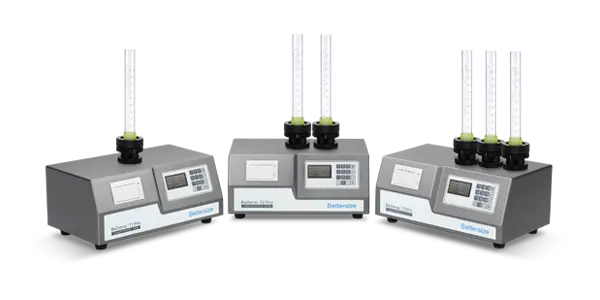電池材料
エネルギーの効率的な変換と貯蔵は、長年にわたり人類の重要な課題であり続けてきました。リチウムイオン電池技術をはじめ、ナトリウムイオン電池やグラフェン電池など、エネルギー貯蔵ソリューションはますます多様化し、広範な用途で信頼性を高めています。電気自動車や送電網のピーク/バレー管理など、これらの用途においては、バッテリー技術の研究、開発、製造の継続的な進歩が必要不可欠です。
Bettersizeは、お客様が効率的で高性能、かつリサイクル可能なバッテリー技術を開発する際にサポートすることをお約束します。この取り組みは、消費者が再生可能エネルギー貯蔵ソリューションを円滑に利用できるよう支援することにもつながります。当社は、広く使用されているリチウムイオン電池技術から、ナトリウムイオン電池、リチウム硫黄電池、空気亜鉛電池、グラフェンベースの電池など、次世代の技術に至るまで、バッテリー開発のあらゆる分野で適用可能な包括的な分析ソリューションを提供しています。これらのソリューションは、初期の研究開発段階から実際の生産に至るまで、すべてのプロセスで活用できます。
Bettersizeの分析ツールを活用することで、バッテリーの性能に重要な役割を果たす粒子材料の分析を迅速かつ簡素化することができます。これらのツールを使用すれば、電極材料やスラリーなど、バッテリーの性能に影響を与える重要な要因をより深く理解し、バッテリー開発のさまざまな側面を最適化できます。これにより、調整の影響を簡単に特定し、最終的には最適なバッテリー性能を実現することができます。
粒子径測定ソリューション
電池の性能、特にリチウムベースの電極材料では、粒子径が出力、内部抵抗、使用寿命、エネルギー密度に大きく影響します。電極材料は、粒子を含むスラリーを導電性コレクターにコーティングして形成されますが、粒子径が小さいと比表面積が増加し、反応効率が向上します。また、粒子径が電極近傍のイオン移動効率に影響を与え、内部抵抗にも関わります。さらに、電池サイクル中に粒子径が変化することで、容量低下や経年劣化が進行することもあります。そのため、粒子径の測定は、新しい電池の開発、性能最適化、生産の全過程において非常に重要です。
Bettersize S3 Plusは、レーザー回折・散乱法と画像解析を組み合わせた革新的な粒度分布測定法を採用しており、大きな粒子にも対応した高精度な測定を提供します。この技術により、少数の特大粒子による品質問題を防ぐことができます。
粒子形状評価ソリューション
電池の性能において、粒子形状は安全性、寿命、エネルギー密度、出力などに重要な影響を与えます。不規則な形状の粒子はスラリーの粘度を高め、コーティングが不均一になり、電池の安全性や寿命に悪影響を与える可能性があります。さらに、粒子形状は電極の充填密度や気孔率にも影響を与えるため、粒子形状の最適化は高性能な電池を実現するために極めて重要です。
BeVision画像式粒子径・形状分析装置は、粒子径と形状を迅速に分析し、電池材料とプロセスの最適化に必要な情報を提供します。
粒子密度測定ソリューション
電池のエネルギー密度において、電極材料の真密度と粉末密度は重要な役割を果たします。高いエネルギー密度を実現するためには、適切な材料選択と合成方法を用いて電極材料の密度を最大化する必要があります。また、密度が高い電池は高レート充放電時に優れた性能を維持し、容量低下を抑制できます。
BetterPyc 380ピクノメーターは、電極材料の真密度を測定するための信頼性の高いツールです。さらに、PowderPro A1やBeDensi T Proシリーズを用いて、電極材料のタップ密度を分析することも可能です。
スラリー安定性評価
電極スラリーの安定性は、バッテリー製造において最も重要な要素の一つです。安定したスラリーは、電極板の加工を容易にし、最終的には高品質なバッテリーを実現します。スラリーの安定性は、ゼータ電位によって決まります。ゼータ電位が高い粒子は相互に反発し合い、安定した分散を維持します。一方、ゼータ電位が低い粒子は凝集し、コーティングの不均一性を引き起こし、最終的に電池性能を低下させる原因となります。
BeNanoナノ粒子径・ゼータ電位分析装置は、この課題に対応し、電極材料のゼータ電位をモニタリングおよび最適化することで、高品質な電極コーティングを実現します。
Citations
- Bettersizer 2600
Functional redundancy as an indicator for evaluating functional diversity of macrobenthos under the mussel raft farm near Gouqi Island
DOI: 10.1016/j.aquaculture.2023.740024 Read ArticleZhejiang Ocean University | 2024Biological traits analysis (BTA) helps to evaluate the effects of different environmental variables on the traits-based functional composition of macrobenthos. However, research on functional traits of macrobenthos under mussel farming is limited. We investigated the spatial and temporal response of the benthic system in terms of taxonomic and functional diversity to environmental variables of farming and natural stressors resulting from suspended mussel farming near Gouqi Island of eastern China Sea. The functional traits of macrobenthic assemblages under mussel farming were characterized by “medium adult body size”, “vermiform body form”, “high flexibility”, “infauna”, “semi-motile”, “gonochoristic”, “surface deposit-feeders”, “carnivores”, “semi-motile burrowers”, and “tube-dwellers”. Functional redundancy was stable in response to mussel farming stresses among seasons, whereas species diversity showed efficient to evaluate natural variables. Functional diversity was significantly affected by farming stressors rather than natural variables, Further analysis using multivariate methods together with continuous monitoring were highlighted to evaluate the impacts of mussel farming. Our results reinforce the importance of macrobenthic species and functional traits analysis to evaluate human stresses driven impacts in offshore ecosystems. By analysing the environmental variables with different sources, independently, we concluded the main effects of human pressures on macrobenthic community. Such distinction could be particularly effective to isolate variable environmental descriptors and evaluate their effects on functional diversity, making the current approach promising for the evaluation of ecological effects of anthropogenic stressors in aquaculture areas. - Bettersizer 2600
Degradation characteristics and utilization strategies of a covalent bonded resin-based solid amine during capturing CO2 from flue gas
DOI: 10.1016/j.seppur.2023.125621 Read ArticleChina University of Petroleum | 2024In this study, various types of degradation as well as attrition which are possibly encountered in a circulating fluidized bed temperature swing adsorption (CFB-TSA) process, were conducted experimentally to evaluate the stability of a resin-based solid amine sorbent. Other characterizations methods, such as elemental analysis (EA), Fourier transform infrared spectroscopy (FTIR) etc. were applied to further reveal the degradation mechanisms. The results showed that thermal degradation occurs from 140–160 °C due to the decomposition of amine group. The CO2-induced degradation occurs from a higher temperature of 160–180 °C accompanied by the production of urea. Hydrothermal stability is good below 130 °C, but the ionic impurities in steam crystalized on particle surface can accelerate the degradation. Oxidative degradation is the most harmful, which starts at a lower temperature of 70–80 °C with the formation of aldehyde. The existence of H2O in atmosphere can alleviate the oxidative and CO2-induced degradations. The employed sorbent has a very low attrition index of 0.05, which is 1–2 orders lower than typical commercial fluidized bed catalysts. Based on the results of stability evaluation, some design suggestions for proper utilization of this sorbent or other similar resin-based sorbents have been provided in an industrial CFB-TSA process.
- Bettersizer 2600
De-branching of starch molecules enhanced the complexation with chitosan and its potential utilization for delivering hydrophobic compounds
DOI: 10.1016/j.foodhyd.2023.109498 Read ArticleShihezi University | 2024The current study aimed to prepare the complexes between debranched-waxy corn starch and chitosan polymers (DBS-CS), and then investigated their corresponding structural characteristics, rheological property and potent application in Pickering emulsion. The results indicated that the existence of chitosan significantly inhibited starch short-range molecular rearrangement for all DBS-CS samples, which was manipulated by both debranching treatment and chitosan content. Interestingly, this is the first study to reveal that the outstanding peak at 1.8 ppm in 1H NMR spectrum for sample DBS-CS was gradually shifted towards a lower-field region following an increased chitosan content. Moreover, the debranching treatment shifted the crystallinity pattern from A-type to B-type and the relative crystallinity of DBS-CS decreased gradually with the increased content of CS. All samples had a pseudoplastic fluid and shear-thinning behavior with an enhanced shear resistance following the complexation. The DBS-CS was applied in a Pickering emulsion for showing a greater emulsifying stability and a lower gel strength than native NS-CS prepared emulsion. Importantly, the encapsulation ability of curcumin in the DBS-CS emulsion was significantly improved, followed by an increase of 15.45% for its corresponding bioavailability compared to the control. Therefore, this study might highlight a potential carrier for delivering the bioactive substances in a green pattern. - Bettersizer 2600
Heat-induced aggregation behavior of wheat gluten after adding citrus pectin with different esterification degree
DOI: 10.1016/j.foodhyd.2023.109420 Read ArticleGansu Agricultural University | 2024Wheat gluten aggregation during heat treatment is beneficial to the final quality of gluten-based products. Exogenous pectin can affect gluten aggregation. However, the effect of pectin with different degrees of esterification on the heat-induced aggregation behavior of gluten and its possible mechanism are still unclear. Thus, the heat-induced aggregation behavior of gluten after adding pectin with different esterification degree was studied in this study. When the temperature was raised from 25 °C to 95 °C, pectin affected gluten aggregation and was related to the degree of esterification. Specifically, the results of rheological properties and particle size indicated that low-ester pectin improved the viscoelasticity of gluten and promoted gluten aggregation. Thermal properties revealed that enthalpy of gluten added with low-ester pectin (37%) increased from 92.96 J/g to 95.40 J/g during heating process. Structurally, the fluorescence intensity and surface hydrophobicity of gluten added with low-ester pectin (37%) were lower than those added with high-ester pectin (73%). In addition, low-ester pectin (37%) significantly increased the disulfide bond content (from 15.31 μmol/g to 18.06 μmol/g) and maintained β-sheet content of gluten compared with gluten alone at 95 °C, indicating that low-ester pectin was more likely to induce gluten aggregation. However, scanning electron microscope showed that the gluten added with low-ester pectin (46%) exhibited a denser network structure at 95 °C than that added with low-ester pectin (37%). These results will provide a theoretical base for the regulation of gluten aggregation and the quality of gluten-based products by pectin with different esterification degree.
- 1
- 2
- 3
- 4
- 5
- 6
- 84














